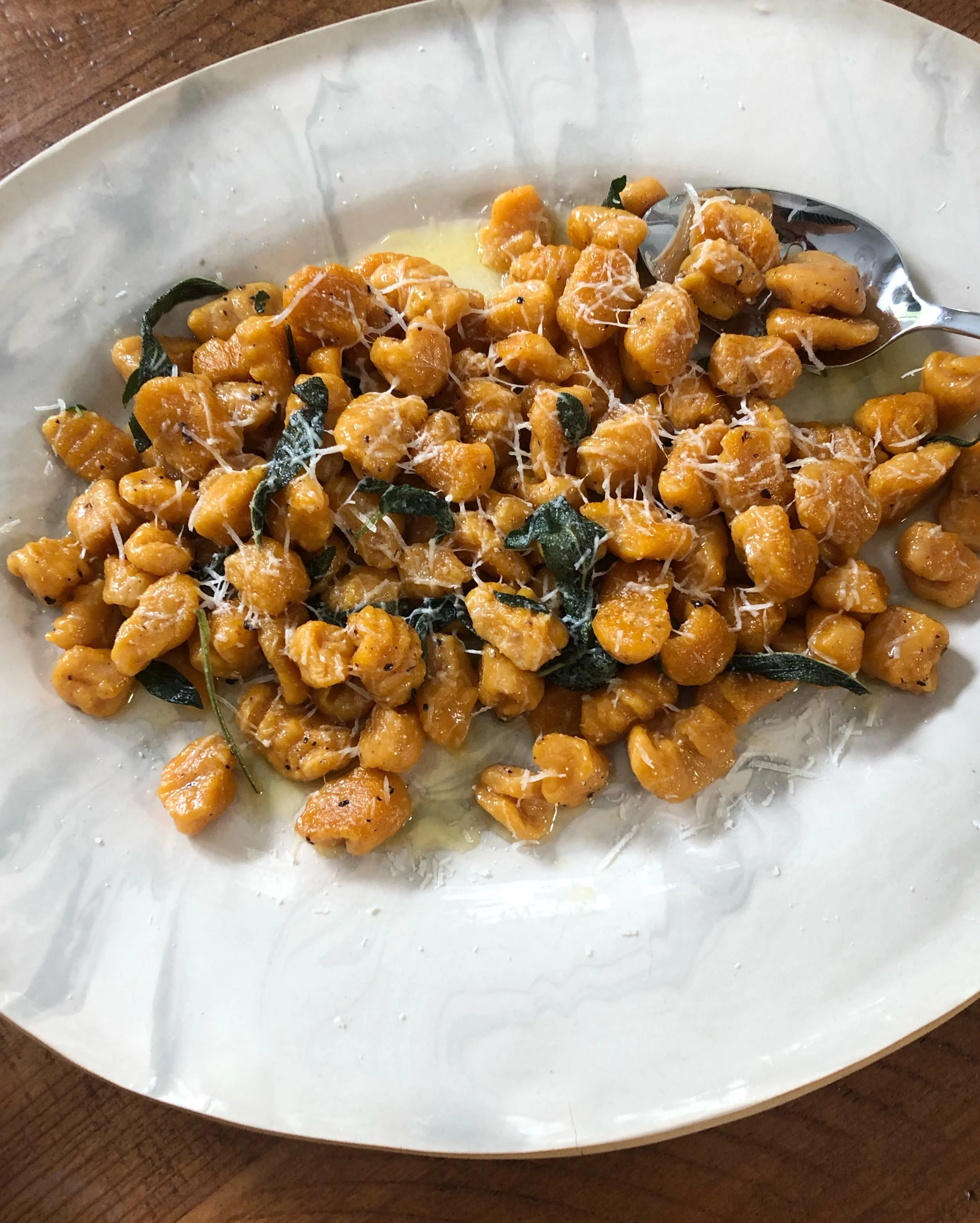Years ago we started referring to gnocchi, one of my sons’ favorite foods, as pasta pillows. The name stuck so well that I had convinced myself gnocchi meant “pillows” in Italian. I was incorrect. Possibly the earliest pasta shape created by Italians, the actual translation of the word gnocchi is “dumpling”. However, the word comes from nocchio meaning a knot in wood or a knuckle. While the shape of a gnoccho might resemble a knuckle or a small knot, the texture mimics a pillow - light, fluffy, and airy when prepared properly. Vegetables gently mixed into the dough along with flour and an egg help ensure this airiness.
Potato gnocchi might be most recognizable, but you can actually make gnocchi out of a multitude of vegetables and even nuts. What follows is a method for preparing gnocchi with squash or pumpkin, sweet potatoes and beets, three ingredients in abundance all fall and winter long around here. But you could certainly attempt this method with toasted walnuts, and cooked chestnuts, carrots, onions, and even cabbage. Once I’ve tested those, I’ll be back to update this post.
Gnocchi With Herb Brown Butter
Yield: 2 pounds pasta dough, 8-12 servings
Note: You can vary the spices and herbs with the vegetables. For combinations, I recommend:
Squash + Nutmeg + Sage
Beet + Clove + Fennel Frond
Sweet Potato + Nutmeg + Thyme
What You Need:
~2 lbs mashed sweet potatoes or purée of butternut squash, pumpkin or beet root
¼ teaspoon kosher salt plus more for the pasta water
1 egg, lightly beaten
¼ teaspoon freshly ground nutmeg or clove
3 - 3½ cups “00” or all purpose flour
6 tablespoons salted butter
½ cup fresh sage or 2 tablespoons fresh thyme, leaves only
¼ teaspoon freshly ground black pepper
grated pecorino romano or parmesan regiano, for serving, optional
What You Do:
Prepare the vegetables. Use already cooked vegetables or follow these instructions.
ALL: Preheat oven to 375 degrees.
Sweet Potatoes: If they are large (1+ pound each), slice in half lengthwise, sprinkle with kosher salt and place cut side down on a parchment-lined baking sheet. If they are smaller or more narrow, bake whole. Bake at 375 degrees for 45-60 min or until sweet potato is soft and mushy to the touch. Allow to cool about 5 minutes. Peel the skins from the sweet potato and transfer flesh to a large bowl. You should have about 2 - 2½ cups. Mash with a potato masher or fork or use a ricer.
Squash or Pumpkin: Cut pumpkins and squash in half. [If using butternut squash, cut into two pieces so that you have separated the bulb end from the narrow neck end and then cut each of those pieces in half lengthwise.] Scoop out the seeds and use in another recipe. Sprinkle kosher salt on the cut sides of the squash and place cut side down on a baking sheet. Bake at 375 degrees for 40-50 minutes or until squash is soft, easily pierced with a fork and the skin is crackly and dry. Bulb halves may be done 5-10 minutes before neck pieces. Allow to cool 5 minutes. Scoop the flesh out of the skins and transfer to a food processor. Purée until smooth. For complete instructions and visuals on preparing squash or pumpkin purée, see Possibilities for Fresh Pumpkin Purée.
Beets: Sprinkle beets with salt and wrap with foil. Roast until tender and easily pierced with a skewer or paring knife, about 30-60 minutes at 375 degrees, depending on size of beets. Transfer to a bowl or small pot and cover with a tightly fitting lid. Allow to cool 10 minutes. This will allow skins to loosen and will trap moisture in the beet. Peel the skin and discard. Chop larger beets and transfer to a food processor. Purée until smooth.
To prepare the gnocchi:
In a large bowl, combine mashed vegetables with ¼ teaspoon kosher salt, egg, ground nutmeg or clove [see note], and 3 cups flour. Mix with a wooden spoon until it mostly comes together into one large mass. Turn the contents of the bowl onto your work surface and form it into a ball with your hands.
Knead gently for no more than 3 minutes, adding a tablespoon of flour at a time if necessary. The amount of flour you need to add will depend on the moisture level of the vegetables used. If the dough is just a touch sticky, you may not add any at all. If it is gummy, you might add up to one cup more flour. Dough should be slightly sticky to the touch, but holding together in one dough ball.
Cover the dough and allow to rest for about 20 minutes. You can also wrap the dough tightly and rest for 24 hours in the refrigerator before rolling. Meanwhile, boil water for cooking the gnocchi. Be sure to season heavily with kosher salt.
After it rests, cut sections of dough, approximately 4 ounces each. Roll each section into long ropes about ½ inch in diameter.
Cut ½ inch nuggets from the ropes.
Using a gnocchi board, roll the nuggets gently to create the indentation of ridges. Alternatively, place the nugget on your work surface, gently press a fork into the nugget while simultaneously rolling it 180 degrees.
Transfer gnocchi to a floured tray or baking sheet. Cook immediately or freeze in a single layer until solid and then transfer to a container or freezer safe bag.
Gently place gnocchi into salted boiling water. If necessary, reduce heat to a rolling boil. Cook fresh gnocchi for about 5 minutes or until tender (if frozen, cook about 7-8 minutes). Drain, reserving some of the pasta liquid.
In a large skillet, melt the butter and cook until lightly browned. Add the fresh herb leaves and cook until sizzling, about 30 seconds. Add the gnocchi to the skillet with butter and herbs, along with about ¼ - ½ cup of pasta cooking liquid that you reserved. Cook until liquid thickens into a creamy sauce. Season with freshly ground black pepper and grated cheese, if desired, and serve immediately.
You’ve got options…when it comes to shaping gnocchi and getting the distinctive ridges:
For the most traditional method, use a gnocchi board, pictured in the grid above (middle row, right). This small wooden board is found in kitchen stores, and usually costs about $5 - $10.
Use a sushi mat, and you can ultimately roll dozens at once.
Use a fork as in the photo above.
Ignore this step entirely and just boil the nuggets cut from the rope. The ridges are mostly aesthetic, but they do also help the gnocchi to hold onto sauce.














